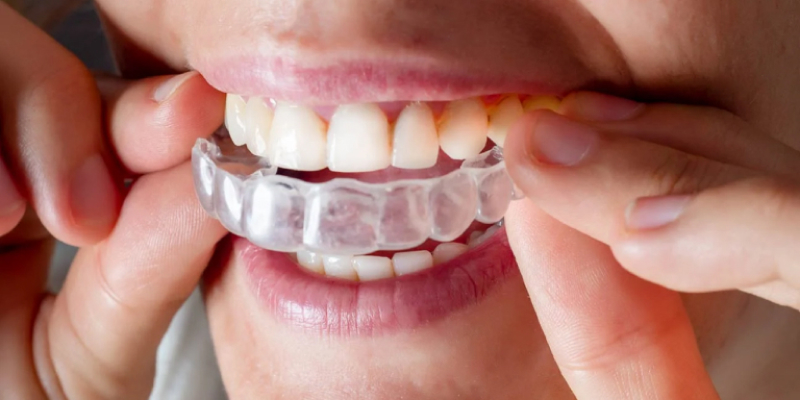Our Invisalign Service: All About HSA And FSA For Invisalign® Treatment for your Perfect Smile
Are you considering straightening your teeth using clear braces like Invisalign? Alright! You may then be thinking if you need budget a significant amount of money because Invisalign therapy is more costly than traditional orthodontic treatment.
The good news is that Invisalign transparent braces are now covered by numerous insurance carriers, allowing patients to optimize their benefits. This is made possible by health savings accounts (HSA) or flexible savings accounts (FSA). As a result, you can use this money to cover your actual medical costs.
Tax-advantaged accounts known as HSAs and FSAs can be utilized to pay for qualified medical expenses, including Invisalign® treatment. You can allocate pre-tax funds to healthcare expenses using these accounts, which allows you to save money on taxes.
This post will go over the differences between HSAs and FSAs, the requirements, and the financing options for Invisalign® treatment. We will also go over some important things to keep in mind when funding medical expenses with these accounts.

What is FSA & HSA?
HSA (Health Savings Account): Copays, deductibles, and other medical costs can be covered by the tax-free money in your HSA. Contributions to an HSA are restricted to those with high-deductible health insurance policies.
FSA (Flexible Savings Account) :Are health insurance benefits offered by employers that allow workers to set aside money for certain qualified medical expenses that are not taxable. FSAs are financed by regular pre-tax deductions from your pay.
Recognise the Difference
In most areas, HSAs and FSAs are nearly identical. The accounts allow you to save money tax-free, which you can later use to cover medical expenses that you would otherwise have to pay out of pocket. However, it's important to understand and be aware of a few key differences between HSAs and FSAs.
| HSA | FSA | |
|---|---|---|
| How to Qualify | Have a high-deductible health plan | Work for an employer that offers Flexible Spending Accountings(FSA) |
| 2023 Contibution Limit | $3,850 for an indivisual, $7,750 for a family | $3,050 |
| Contribution Adjustment | Anytime | Only during special or open enrollment periods. |
| Expiration | There is no expiration for funds. | Every year on December 31st. |
| Account Ownership | The insured indivisual. | The employer. |
| Using Funds | Can be used for medical expenses or withdrawn for a 20% penalty. | Can be used for medical expenses or withdrawn for a 20% penalty. |
| Limits on Spending | You can only spend what had been contributed but can later file for reimbursement. | You can use your FSA based on what you are expected to contribute by the end of the year. |
In What Ways Do They Support Orthodontic Treatment?
As long as an orthodontist or dentist recommends treatment, orthodontic procedures are eligible for HSA and FSA reimbursement as medical costs. These monies can be used to cover coinsurance, deductibles, and/or direct treatment costs.
You receive greater value from these accounts than you would from a regular savings or checking account because the money in them is tax-free. Furthermore, funds in an FSA near the end of the year can expire, so making treatment arrangements or paying for Invisalign or braces is important. It is frequently advantageous that you still have access to it at the same time. This covers orthodontic treatment for you and any family members who qualify.
How to Utilise Your HSA Cash
When paying for a procedure, you must follow your provider's instructions in order to access your HSA funds. Usually, you will have four options:
- Benefits/Debit Card: With this option, you can use your HSA just like a bank account. Transactions are limited to your HSA's current amount and medical vendors.
- Checks: If you request one, a lot of HSA administrators will also write you a cheque. You can then apply these to your regular bank account. If your employer offers this service, you can use the HSA portal to pay medical providers directly.
- Reimbursement: In this scenario, you make the payment yourself. After that, you use your HSA money to compensate yourself.
How about if I have dental insurance as well?
FSA funds can be used to cover the cost of Invisalign treatment even if you have dental insurance. All that needs to be kept in mind is that the cost cannot be doubled. Put another way, your FSA funds cannot be refunded if your insurance pays for Invisalign in its entirety. Your FSA can be used to make up the difference if your insurance only pays for a portion of the cost of your Invisalign treatment, say $2,000 of it.
But keep in mind that getting dental insurance does not guarantee that it will cover the cost of Invisalign. Make sure to confirm the limitations of your coverage and inquire about the differences between orthodontics for adults and teens and necessary vs cosmetic procedures.
How can I save money with my FSA or HSA?
Everything is summed up in one word: tax-free. By paying for your orthodontic care with pre-tax monies from your HSA or FSA, you can save a lot of money.
If you have any questions about how dental insurance covers Invisalign, speak with your dentist or dental team. We are able to guide you through flexible payment options and financial plans. When you know the out-of-pocket costs for your orthodontic treatment, you may make suitable arrangements based on that information.

